Bill Proposes 5-Year Extension of Hospital-at-Home Waiver: What Home Health Agencies Need to Know in 2025
In November 2025, federal legislation proposed extending the Hospital-at-Home waiver for five years through 2030, but the original waiver expired on September 30, 2025. This comprehensive guide examines the proposed Hospital Inpatient Services Modernization Act, its current status, and critical implications for home health and hospice agency owners navigating this regulatory shift.
11/3/20255 min read

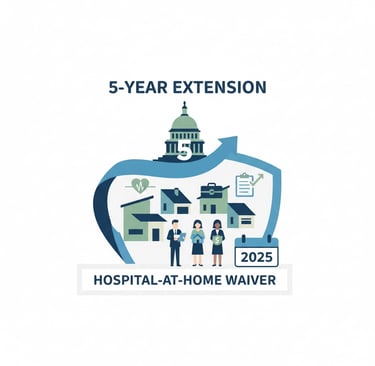
Understanding the Hospital-at-Home Waiver Program
The Hospital-at-Home (H@H) program fundamentally changed how acute care could be delivered by allowing hospitals to provide inpatient-level care in patients' homes. Originally launched in November 2020 as a COVID-19 response measure, the program enabled participating hospitals to bill Medicare and Medicaid for services typically provided in traditional hospital settings.
By August 2025, 413 hospitals across 146 health systems and 39 states had received approval to operate Hospital-at-Home programs. This rapid expansion demonstrated the program's effectiveness in improving patient outcomes while reducing healthcare costs and hospital readmissions.
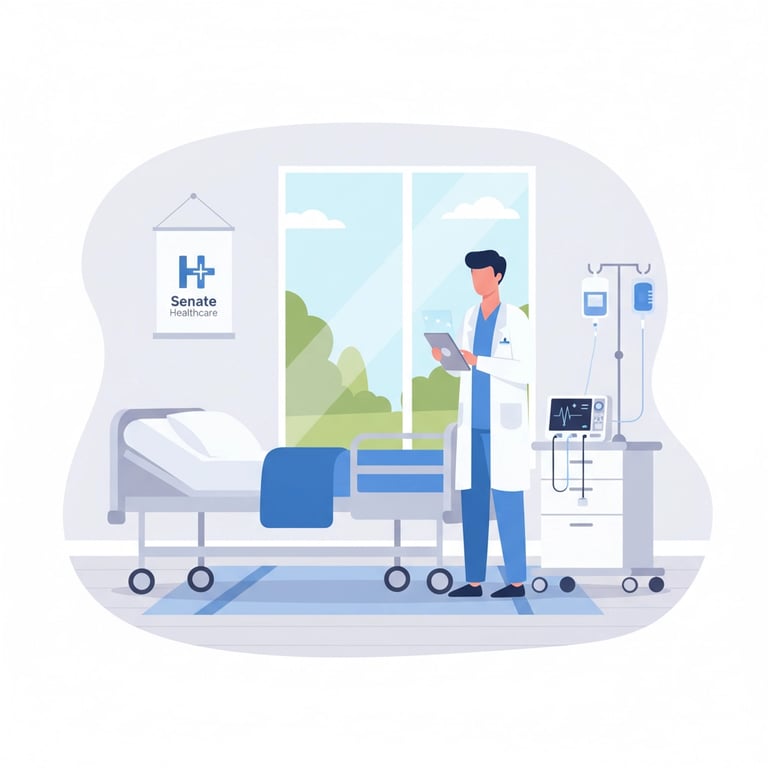

The Hospital Inpatient Services Modernization Act: Key Details
On September 17, 2025, the House Ways and Means Committee unanimously advanced the Hospital Inpatient Services Modernization Act (H.R. 4313/S. 2237). This bill proposes a five-year extension of the Acute Hospital Care at Home waiver, offering hospitals and home health providers a regulatory window through 2030 to invest and innovate in home-based acute care. For ongoing status and detailed legislative progress, see the AAMC summary (https://www.aamc.org/advocacy-policy/washington-highlights/ways-and-means-committee-advances-hospital-inpatient-services-modernization-act) and the official Congress bill tracker
Bipartisan Sponsorship and Support
The legislation gained impressive bipartisan backing, with House sponsors including Representatives Vern Buchanan (R-Fla.), Lloyd Smucker (R-Pa.), and Dwight Evans (D-Pa.). Senate sponsors included Tim Scott (R-S.C.) and Raphael Warnock (D-Ga.), demonstrating broad political consensus around the program's value.
More than 140 healthcare organizations, including over 50 health systems, sent letters to Congress urging passage of the extension. This coalition emphasized that a five-year extension would provide the stability and confidence needed to invest in and scale hospital-at-home programs nationwide.
Critical Timeline: What Actually Happened
Despite strong support and urgent advocacy, the original Hospital-at-Home waiver expired on September 30, 2025. As of November 2025, the program has officially lapsed without Congressional action to extend the authorization. This creates immediate operational and financial challenges for hospitals and home health agencies that had built their operations around H@H services.
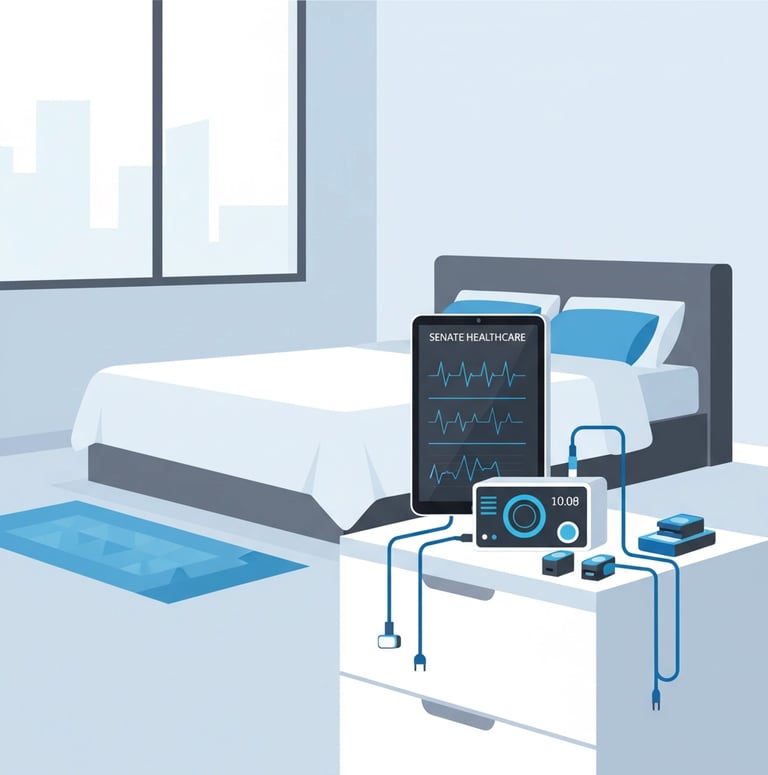

Immediate Impact of the Lapse
Without active waivers, hospitals can no longer bill Fee for Service (FFS) Medicare or FFS Medicaid for hospital-at-home services. While billing remains possible for private insurers, Managed Care Medicaid plans, and self-pay patients, the loss of Medicare FFS reimbursement represents a significant revenue reduction for most participating hospitals.
Critically, if the waiver is reinstated after this gap, hospitals cannot retroactively bill for services provided during the lapse period, creating potential financial losses that accumulate daily.
Strategic Implications for Home Health Agencies
The Hospital-at-Home program's uncertainty creates both challenges and opportunities for traditional home health agencies. Understanding these dynamics is crucial for agency owners considering their strategic positioning and growth plans.
Competitive Landscape Shifts
Hospital-at-Home programs represented direct competition to traditional home health services in many markets. With the program's current lapse, some hospitals may reduce their home-based service offerings, potentially creating market opportunities for established home health agencies to expand their patient census and service lines.
According to NC Medicaid, providers are prohibited from billing for services rendered during the lapse (after September 30, 2025) if the waiver is not active, with no retroactive billing allowed for care delivered in that period.
Partnership and Acquisition Opportunities
The regulatory uncertainty surrounding Hospital-at-Home programs may create partnership or acquisition opportunities between hospitals and established home health agencies. Hospitals with H@H experience but current billing limitations might seek partnerships with agencies that can maintain Medicare certification and billing capabilities for home-based services.
For agency owners considering exit strategies, this regulatory transition period could present unique valuation opportunities, particularly for agencies with strong Medicare relationships and proven home care delivery systems.
Financial and Operational Considerations
Revenue Impact Assessment
Home health agencies should evaluate how Hospital-at-Home program changes might affect their referral patterns and patient volumes. Hospital partners who previously operated H@H programs may increase traditional home health referrals if they can no longer bill for hospital-level home services.
Agencies should also assess their capacity to absorb potential increases in patient volume and complexity, as some H@H patients may transition to traditional home health services rather than inpatient hospital care.
Staffing and Capability Requirements
The Hospital-at-Home model required hospitals to provide more intensive services than traditional home health care. As the program landscape shifts, agencies may need to evaluate whether they can expand their service capabilities to capture market opportunities or partner with hospitals seeking alternative home-based care delivery models.

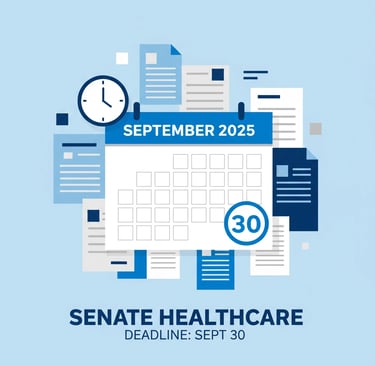


Industry Reactions and Future Outlook
Healthcare industry leaders have expressed significant concern about the waiver's expiration. The American Hospital Association and other major healthcare organizations continue advocating for Congressional action to restore and extend the program.
Evidence Supporting Program Benefits
Research data supporting Hospital-at-Home programs remains compelling. CMS studies showed that home-based acute care accelerates recovery time, lowers mortality rates, and reduces hospital-acquired infections and falls. These outcome improvements, combined with cost savings, provide strong policy arguments for program restoration.
Patient satisfaction scores for Hospital-at-Home services consistently exceeded traditional inpatient care ratings, suggesting strong consumer demand for home-based acute care options when available.
What Home Health Agency Owners Should Do Now
Immediate Action Items
Market Analysis: Assess your local market for hospitals that previously operated H@H programs and evaluate potential referral pattern changes.
Partnership Exploration: Consider reaching out to hospital partners about potential collaboration opportunities during this regulatory transition period.
Financial Planning: Review your agency's capacity for potential patient volume increases and service line expansions.
Legislative Monitoring: Stay informed about Congressional action on Hospital-at-Home extension legislation, as program restoration could happen quickly.
Strategic Planning Considerations
Agency owners should also consider how regulatory changes impact agency valuations and strategic planning decisions. The current regulatory uncertainty creates both risks and opportunities that should factor into long-term planning and potential exit strategies.
For agencies considering expansion or acquisition activities, the Hospital-at-Home program's status represents a significant market variable that could affect competitive dynamics and growth opportunities throughout 2025 and beyond.
The Hospital-at-Home waiver situation demonstrates the importance of staying agile in healthcare's evolving regulatory environment. While the current program lapse creates challenges, it also presents opportunities for well-positioned home health agencies to strengthen their market position and strategic partnerships during this transitional period.
Unlock Your 30-Minute Agency Succession Review
Maybe you're ready to expand your reach, or perhaps it's time to consider your legacy and the future of your business. Either way, it all begins with a conversation. Schedule a confidential, no-obligation call to explore what the future might hold for you and your business.
Complete the form, and we'll reach out for a chat...
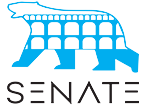

© 2025 SENATE HEALTHCARE LLC.
ALL RIGHTS RESERVED


